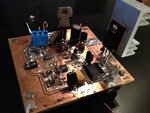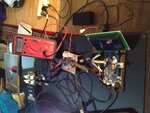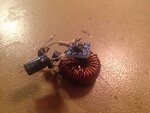Warpspeed
Advanced Member level 5
- Joined
- May 23, 2015
- Messages
- 2,366
- Helped
- 773
- Reputation
- 1,548
- Reaction score
- 789
- Trophy points
- 1,393
- Location
- Melbourne, Australia
- Activity points
- 20,317
1/Any of the controllers can be synchronized, methods vary, but if you read the application notes they tell you exactly how to do it.Okey I will be very determined to follow the step-by-step approach so I will now only concern my self with controller features I want, and order all other needed parts for the primary. Maybe I need to write a "must have" list for finding a controller.
Now I am just throwing stuff out there.
1, synchronization to other controller possible.
2, current mode control.
3, cycle-to-cycle current limiting.
4, adjustable duty cycle.
5, adjustable dead-time.
.
2/ Current mode control offers many advantages and is definitely recommended for something like this.
3/ Current mode gives you very fast cycle by cycle limiting for free.
4/ Current mode gives you voltage adjustable duty cycle.
5/ With single ended flyback, no dead time is required.
There are dozens of controllers out there that would work fine. The one I usually use is the 3825.
It has optionally current mode or voltage mode control, and the two outputs can be connected to give either an 0-50% or 0-100% maximum duty cycle.
Its difficult to plan far into the future right to the end with a project like this.
Best to start off with something very basic, test it, learn from it and experiment.
Then gradually develop a few ideas, and it will all take on a life of its own.



